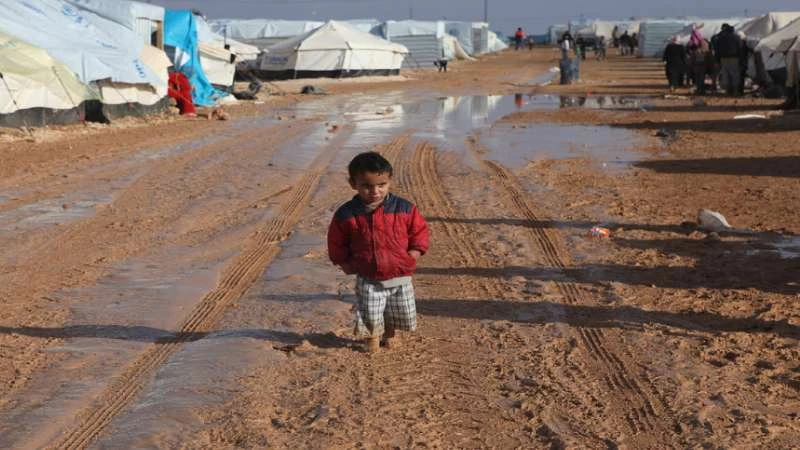The UN, the U.S. and the European powers had taken only “tortured half-measures” prior to Srebrenica, U.S. diplomat Richard Holbrooke noted in his memoir To End a War. UN peacekeepers, lacking a mandate to act, had been ignored repeatedly by Bosnian Serb soldiers.
Then a slaughter ensued.
Muslim men and boys were summarily executed; women were tortured and raped. The atrocities at Srebrenica were later found to have constituted genocide. Thus Srebrenica came to symbolize the danger of establishing enclaves for vulnerable civilians without protecting such areas with military force and, more poignantly, of the terrible price of inaction.
Srebrenica also proved to be the catalyst for the reassertion of U.S. leadership, paving the way for the Dayton Peace Accords later that year, orchestrated by the bulldozing Holbrooke.
Holbrooke told President Bill Clinton that “no vital national interest of the United States was directly affected by whether Bosnia was one, two, or three countries.”
Decentralized governance was Holbrooke’s stated aim, but dissolution was very much on the table. The imperative was ending the conflict, for both national security and humanitarian reasons.
The signatories at Dayton acquiesced to the political decentralization of Bosnia, which had been a fact for years. In the months after Dayton, NATO forces (including 20,000 U.S. troops) joined UN forces already in Bosnia, part of an international force that ultimately included troops from 32 countries.
Zones of separation were established to end the ethno-religious violence. Many were uprooted and relocated; the generational hatred could be seen in blazing properties their owners destroyed rather than giving them over intact.
But the war had ended. Two decades later, the peace imposed in Bosnia still holds. However imperfect — and Holbrooke was quick to note the imperfections — it was perhaps the greatest foreign policy achievement of Clinton’s presidency.
President Trump’s controversial ban on immigration from seven nations has dominated the news cycle of late.
More significant, though less discussed, is Trump’s apparent commitment to safe zones in Syria. If realized, these zones would be a crucial first step toward ending conflict in Syria. As with Bosnia, the U.S. must understand that its interests are to end the conflict, destroy ISIS and its affiliates, return refugees, and prevent the slaughter of vulnerable civilians.
There is no question that Syria will be substantially more difficult than Bosnia. However, the Dayton model is still the best available.
Baathist Syria, like Iraq, was a state whose organizing principle was to forge a nationalist identity — through compulsion and violence. But loyalty to modern concepts such as state or party proved weaker than religious and tribal identities.
Syria dissolved, perhaps inevitably, into sectarian conflict. It cannot seriously be called a state, let alone a nation-state; the U.S. has no interest in preserving it as such.
Bosnia had mujahedeen who had fought in Afghanistan and many feared it would become another Afghanistan. Syria today makes the jihadi activity of 1980s Afghanistan appear mild. The terrorist crisis in Syria cannot be isolated or ignored.
The administration has not laid out a comprehensive strategy with respect to Syria or the Middle East. However, the fact that among his first phone calls to the Middle East were to the king of Saudi Arabia and the crown prince of the United Arab Emirates to build support for safe zones suggests that he is serious.
Russia quickly raised concerns as did Bashar Assad: Safe zones necessarily imply a substantial diminution of Syria’s regime.
The regime or a representative-ally with the capacity to pressure it (as happened at Dayton, when Serbian President Slobodan Milosevic stood in for Bosnian Serbs and accused war criminal Radovan Karadzic) would have to be brought to the negotiating table.
The current multinational coalition against ISIS would have to be expanded and repurposed. Safe zones would require a massive peace-enforcing effort. (After Srebrenica, the IFOR military mandate upgraded from the UN’s “peacekeeping” to “peace-enforcing,” which sent a clear message to Bosnian Serb forces that prevented any subsequent Srebrenicas.)
No-fly zones would be necessary. The pacification of areas held by ISIS and Al Nusra will require a more significant military effort, though Trump has already committed to this.
If the creation of safe zones moves forward, it will surpass any efforts undertaken by the Obama administration for Syria’s refugees. And the millions of Sunni Syrian refugees across the Middle East, presently placing immense pressure on Lebanon and Jordan, will little care if they are not permitted entry into the U.S. if they can return and live in their country in safety and dignity.
It will not by any means by easy. Trump will require someone like a Holbrooke (probably a general), who can impose his will on the crisis, compelling imperfect action in the absence of ideal solutions.
Holbrooke himself observed in his memoir that “the choice between ‘realists’ and ‘idealists’ was a false one: in the long run, our strategic interests and human rights supported and reinforced each other, and could be advanced at the same time.”
Dayton was called “a construction of necessity.”
To end the war in Syria is another necessity – to advance national security and humanitarian interests. Any model constructed to this end begins with protecting civilians.
For those serious about helping refugees and ending the war in Syria, this may prove to be the bigger story of Trump’s first weeks in office.
Andrew Doran (The Hill)



التعليقات (0)